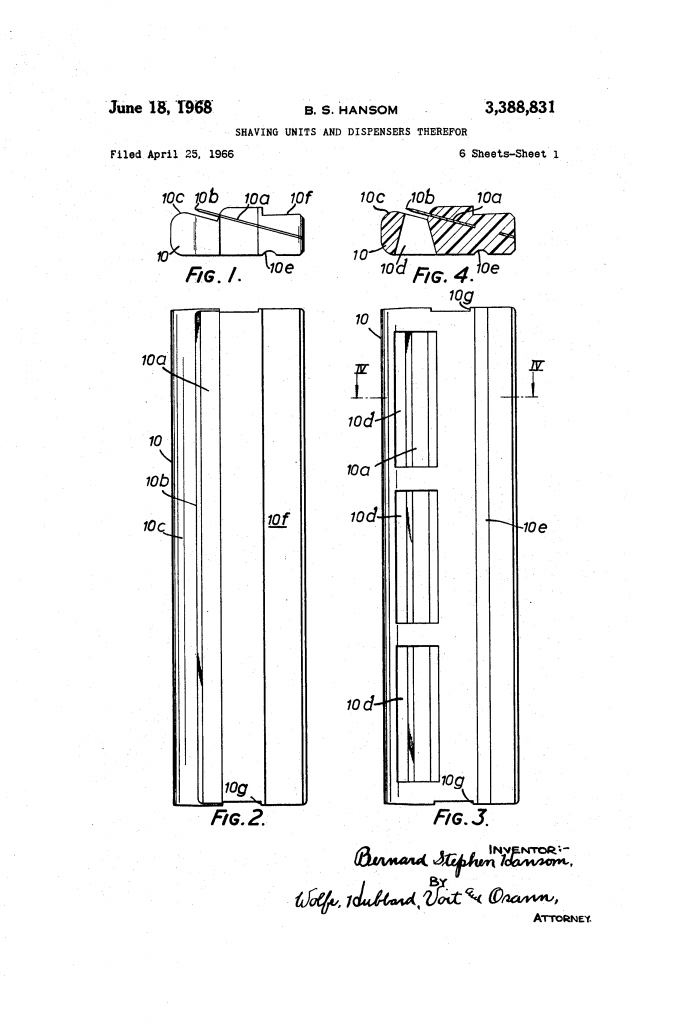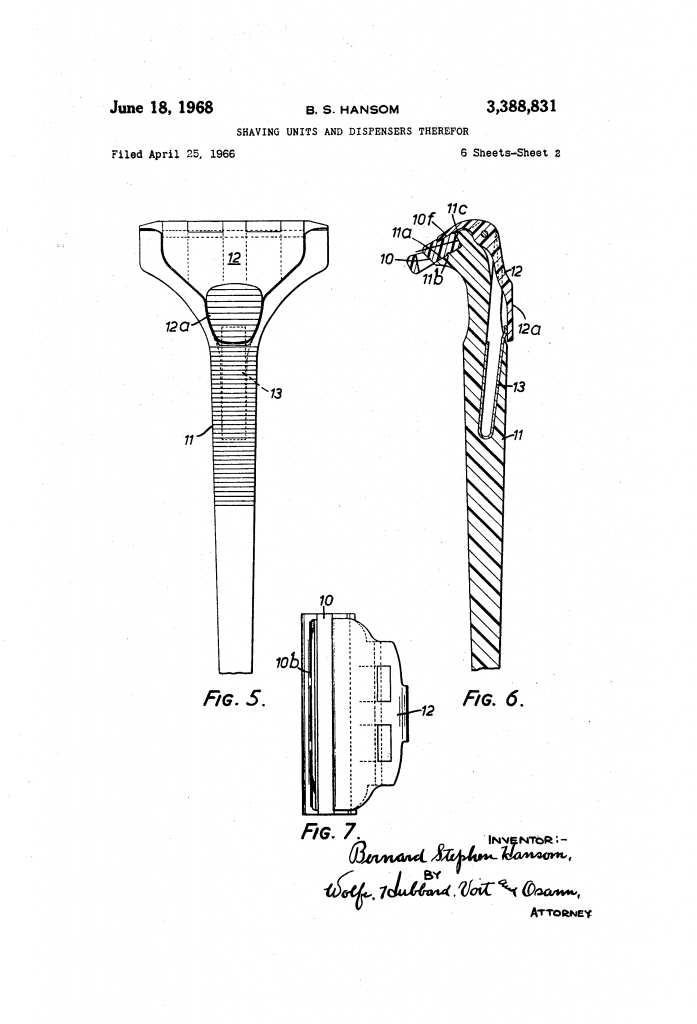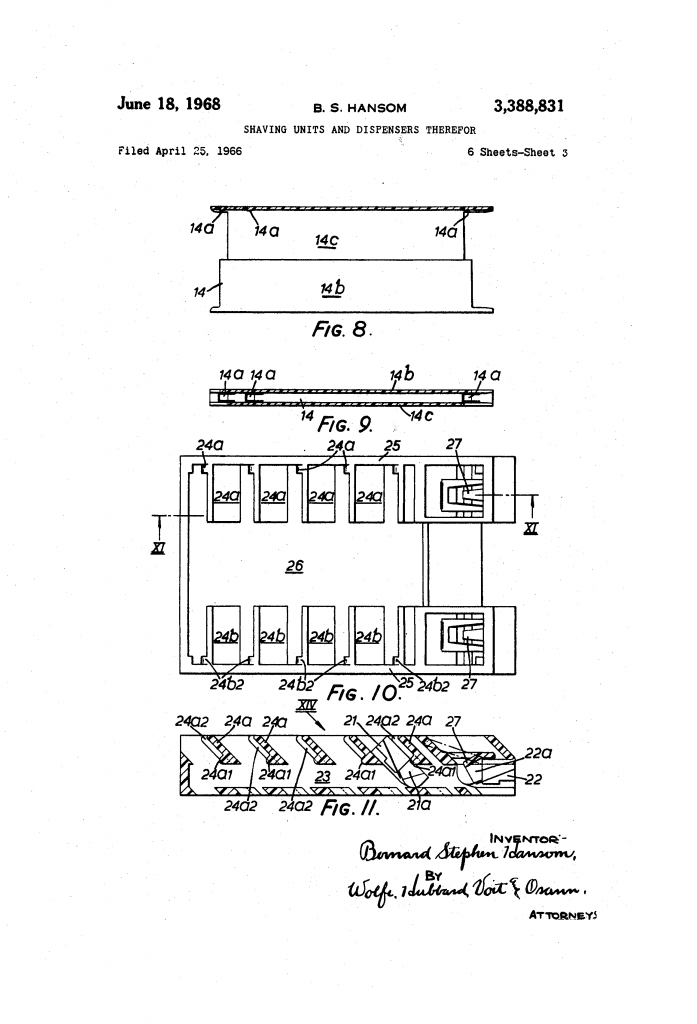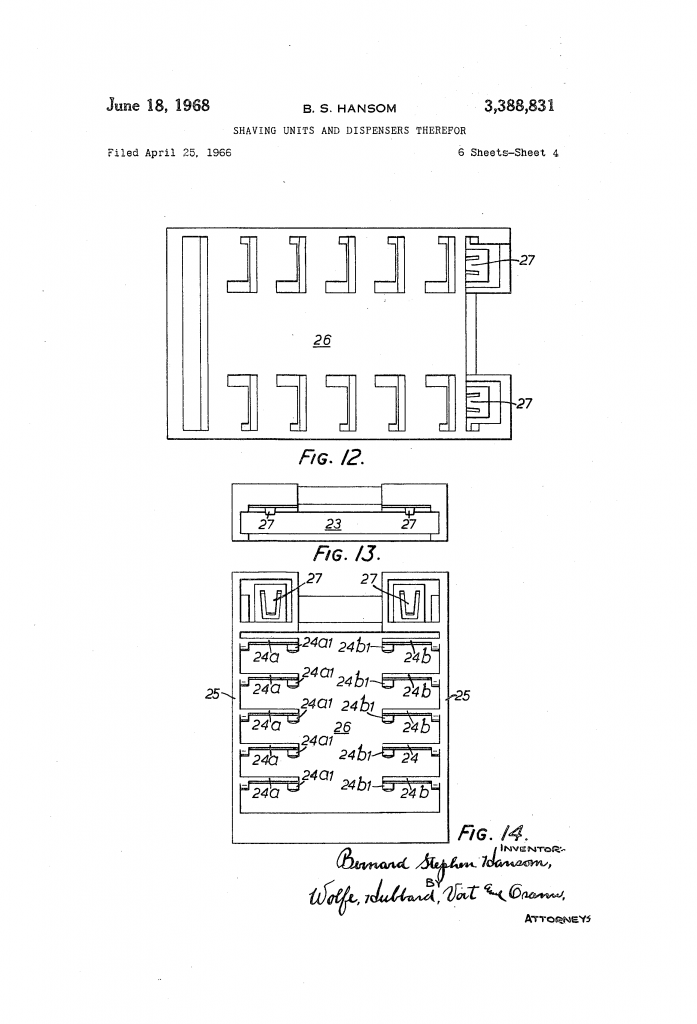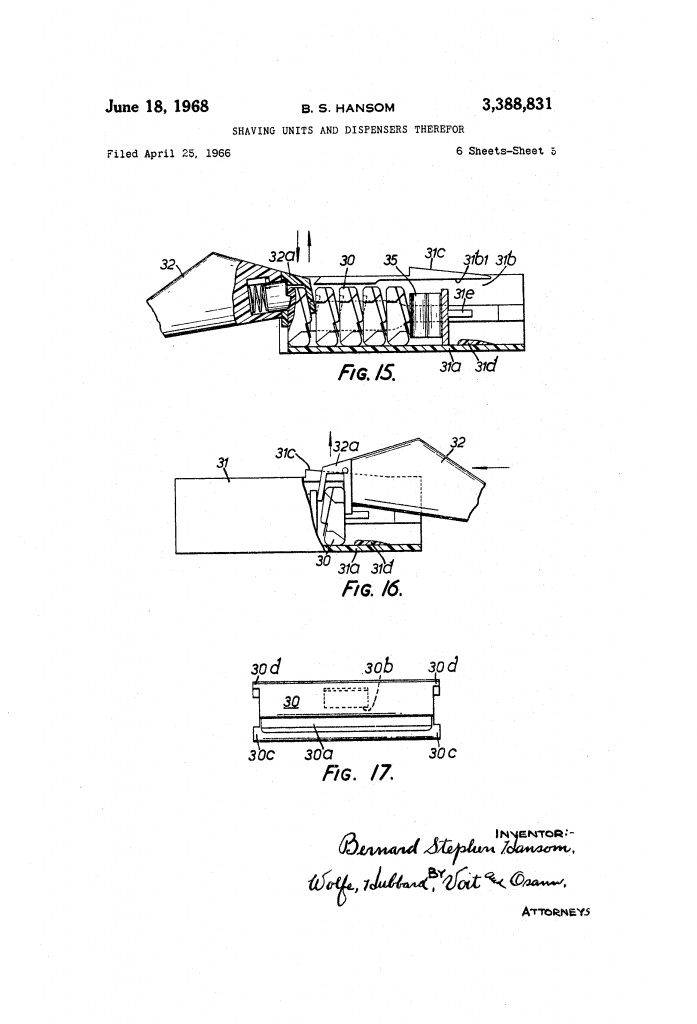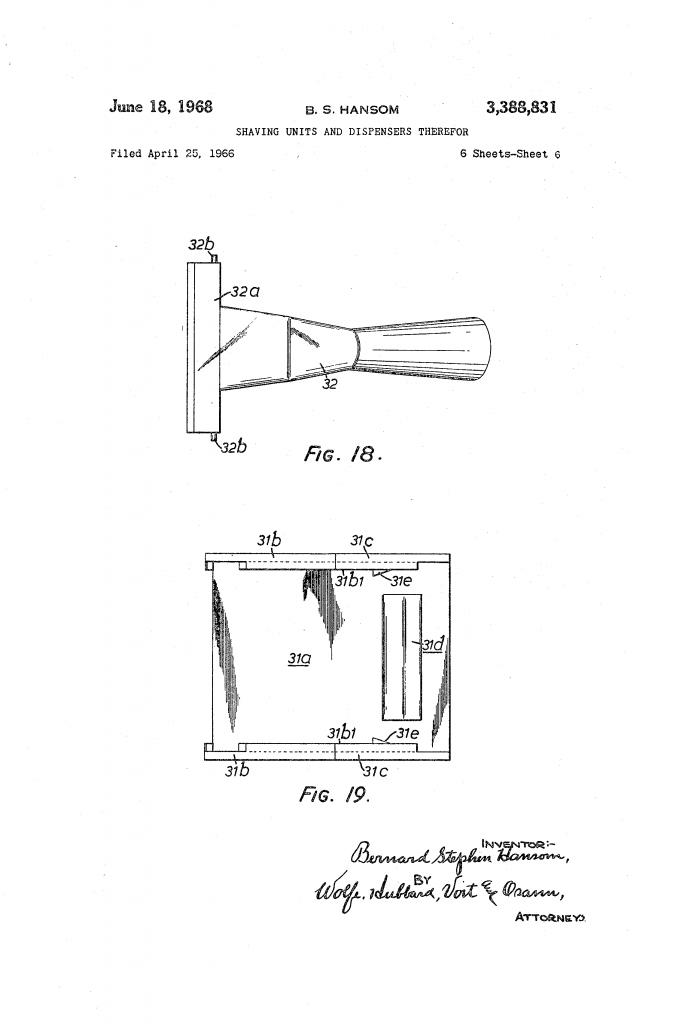Back in 1965 Mr Bernard S Hansom filed a patent. It was not a unique event, Mr Hansom filed a dozen or so patents in the 60’s. But what caught my eye was the title; Shaving units and dispensers therefor.
And judging by the drawings it is an absolute unit too; broad and thick. But what exactly is a shaving unit, and why would it need dispensers?
Turns out it’s little more than an odd name for a razor cartridge. And while I usually stay away from cartridge patents – although not always – this one is kind of interesting. And has a funny title, which I’ll use every chance I get from now on.
The invention
The razor proper were to be made up of two parts. The handle, which held the cartridge. And the cartridge, with an integrated safety bar. Or in the words of the patent:
A razor having a shaving unit formed with a rigid member and a thin cutting edge prepositioned in shaving relation to the rigid member and having a handle releasably grasping the rigid member…
From US patent 3,388,831
The shaving units were to be moulded in such a way that the optional shaving angle would be maintained. Or so the patent claims, over the course of three paragraphs. It is also interesting to note that the patent billed itself not as a replacement for traditional safety razors per see. Instead it sought to get the benefits of various disposable razors that had been patented, but without having to throw out the handle.
Shaving units and dispensers
The shaving units – sorry, cartridges – were reasonable simple compared to the multi-blade monstrosities of today. No tiny leaf springs, no fiddly spacers, no pointless lube strips, and no silly rubber nubs. Instead it was a single edge blade, securely moulded to a plastic rectangle. Or as the patent describes it:
Referring now to FIGURE 1 this shows a shaving unit 10 of generally retangular shape of a plastics material, for example polystyrene, in which the blade 10a is moulded so that its cutting edge 10b is pro-fixed relative to the forward edge portion of the unit which forms a guard surface 100. Channels 10d are provided in the head to facilitate rinsing of the exposed portion of the blade after use, A transverse downwardly opening locating groove 102 is provided in the underface of the unit, to locate with a corresponding transverse upward projection provided on the razor frame, as will be described hereafter, whilst a step 10f is provided on the upper face of the unit to engage a movable clamp on the frame, as will also be described hereafter.
The description of the shaving units in US patent 3,388,831
There is also a lot of words and drawings used to describe various dispenser for the shaving units. Sorry; for the cartridges. It was set up so so the user at no point would have to touch the shaving units cartridges, and was touted as safe and hygienic. To me the drawings does a decent job of explaining them, and the only version that looks a little odd is the spring loaded one shown in figure 15.
The frame, also known as the handle
Most cartridge razors uses tiny little plastic bits that breaks after no time at all to hold the shaving units in place. Mr Hansom’s frame on the other hand had a big, beefy clamp backed up by a leaf spring. The clamp and bump on the frame handle engaged groves in the shaving units cartridges. Nice, simple, and easy to use even with slippery hands. Again in the words of the patent:
Referring now to FIGURES 5 to 7 these show a shaving unit 10 mounted in the handle 11 with the groove 10:: of the underface mating with an elongated projection 11b on the upwardly facing transverse seating surface 11a of the handle. The rear end of the unit 10 abuts against a step lie at the rear end of the seat 11a. The shaving unit 10 is held in position on the seat 11a by a pivoted clamp jaw 12 whose forward upper end has a downwardly facing transverse surface which is urged downwardly onto the step 10f on the upper face of rear portion of the unit Ill by a leaf spring 13 hearing on the lower limb of the clamp.
The head is freed by pressing on a thumb plate 12a of the clamp thereby pivoting the clamp against the reaction of the spring 13 to increase the vertical spacing of the opening between the clamp jaws formed by the seat 11a and the underface of the clamp member 12.
The description of the frame in US patent 3,388,831
Thoughts and assessments
For a razor using shaving units cartridges, this actually don’t look too bad. I mean, bad for the environment, but likely nor bad for shaving with. There is no plurality of blades. There is no ball joints or wobbly bits. The system for affixing the shaving units cartridge to the frame handle is sturdy and simple. It might do okay even today, among the same crowd that uses disposables to shave with. And the reason for that is the same as the razors goal; to be able to change the shaving unit without having to replace the handle.
Me? I stick to my traditional safety razors, thank you very much. An interesting patent none the less, which can be read in full at Google Patents. If you enjoy this sort of thing, you may want to check out my page of shaving patents and oddities.

